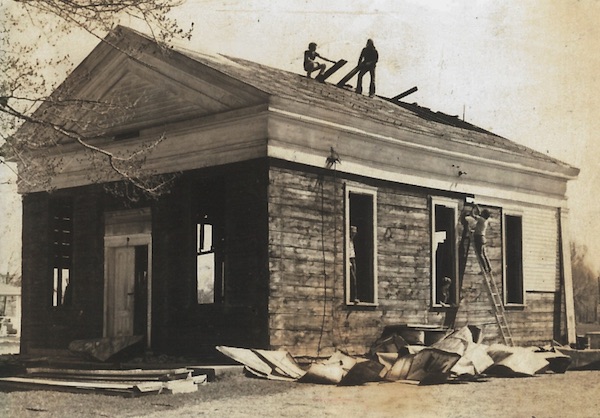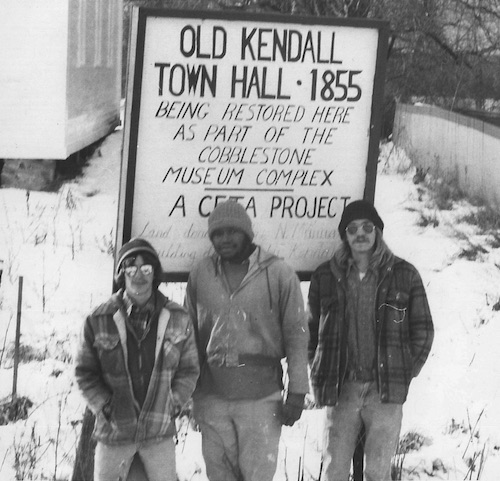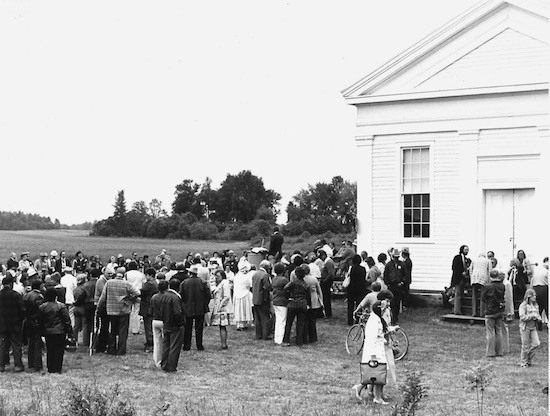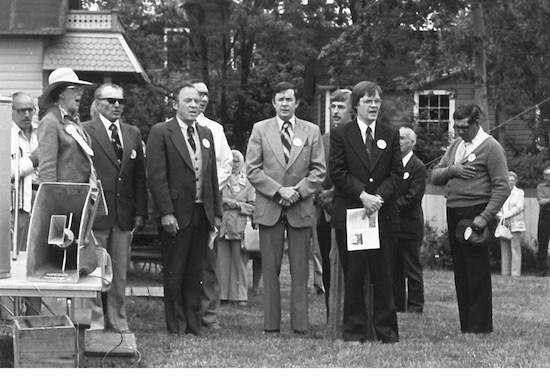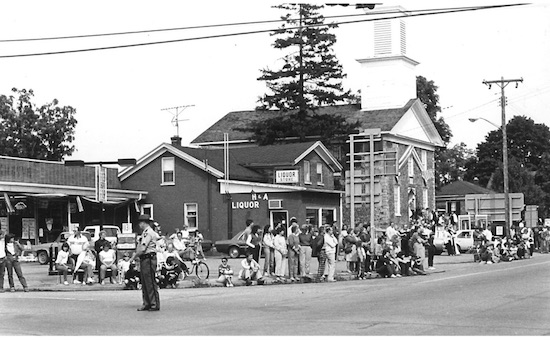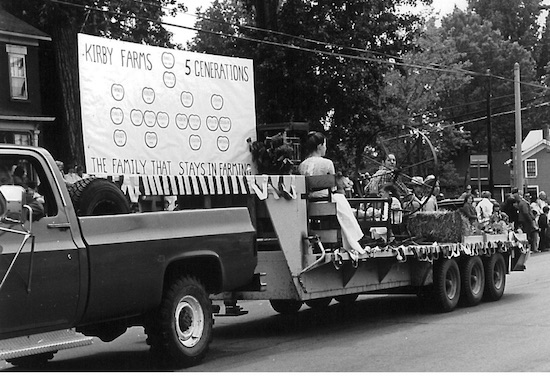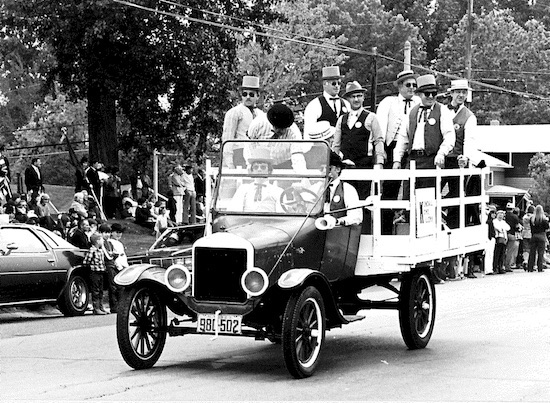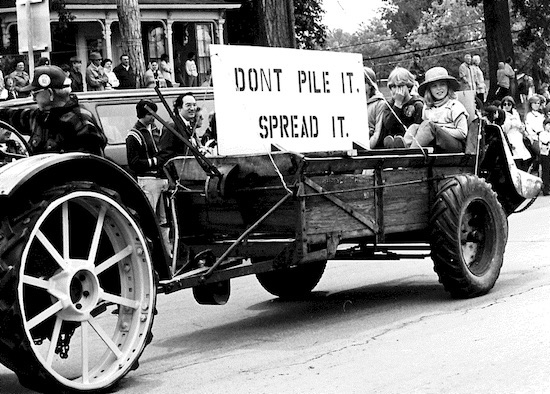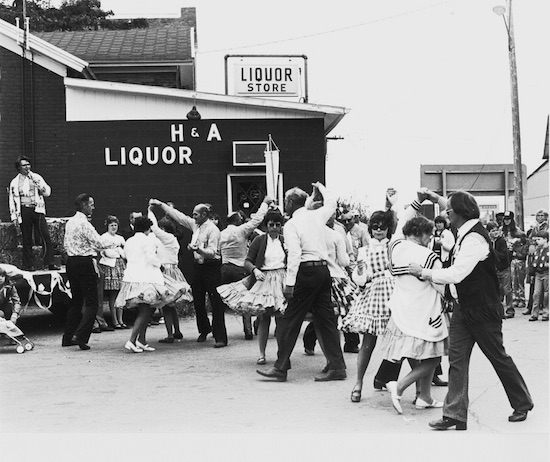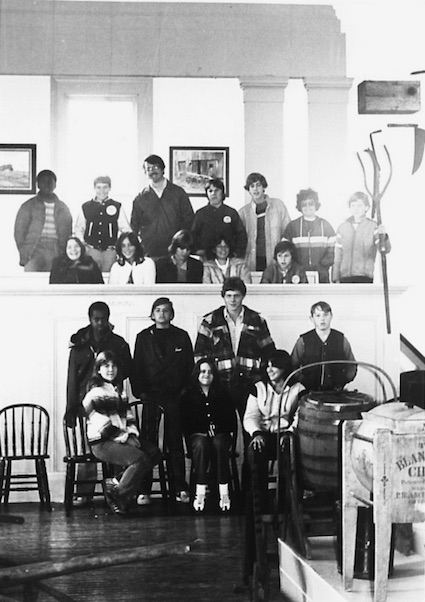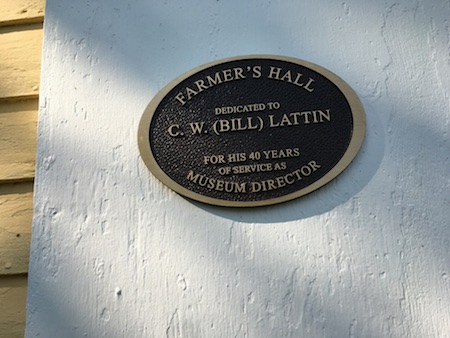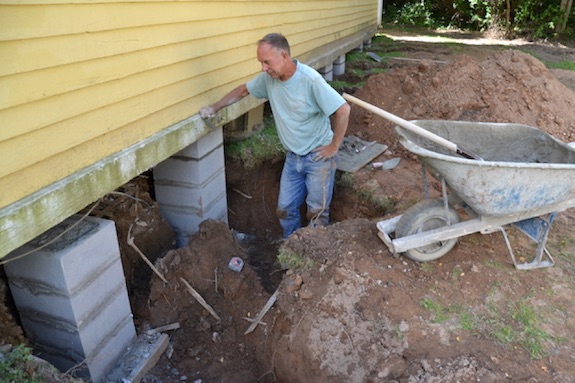Historic Childs: Kendall Town Hall was reconstructed as Farmers Hall at Cobblestone Museum

Photos courtesy of Cobblestone Museum: The Farmers Hall is on Route 98, just south of the Route 104 intersection. The building was originally a church in Kendall and then the Kendall Town Hall.
(Editor’s Note: This is the 11th article in a series about historic Childs in the Town of Gaines. The hamlet of Childs lies just north of Albion at the intersection of Routes 104 and 98. In 2019, Childs was selected to be on the Landmark Society of Western New York’s “Five to Revive” list. In 1993, the federal U.S. Department of the Interior declared the Cobblestone Museum in Childs a National Historic Landmark, the first site in Orleans County with that distinction.)
By Doug Farley, Cobblestone Museum Director
CHILDS – The Cobblestone Museum maintains several wooden structures in the Hamlet of Childs in addition to its National Historic Landmark cobblestone buildings. The large wooden Greek Revival building that is located on the southern end of the campus is known today as Farmers Hall. It has a truly unique and storied history since it was first built in the Town of Kendall in 1855.
Originally the Universalist Church of Kendall, this Greek Revival structure served its congregation in Kendal until the early 1880s when a German Lutheran congregation used the church for another two decades. Following that, the building became the Kendall Town Hall, a status that lasted until a new Town Hall was built in the 1970s.
The next intended use for the old building in Kendall would have been a preservation nightmare. Kendall officials had planned to use the old church turned Town Hall for fire practice. That tragedy was narrowly averted when Cobblestone Museum officials received permission to move the two-story building to their campus to display their growing collection of farm tools from the 19th and early 20th century.
The biggest obstacle to this decision for the Cobblestone Museum board was they had run out of land on which to put the building. That dilemma was solved when Mrs. Neva Murray made an offer of land adjacent to the museum property. In May 1978, Museum Director Bill Lattin, Kendall Town Historian Mrs. Delores Sedore and four CETA workers (a Nixon-era job training program) began the monumental task of disassembling the building, board by board, and numbering all of the components for later reassembly at the museum’s artisan campus on Route 98.
Almost miraculously, the building was reassembled by November of the same year. Bill Lattin has recently lamented, “If I knew then what I know now, I never would have started that project!”
Joe Ward, Eddie Drisdom & Ronnie Tower are shown outside their job site at Farmers Hall following its reconstruction. The next year work progressed on the building’s interior, followed by pulling together the Museum’s farm tool collection from the disparate corners of the county where donated objects lacking display space had been stored for many years.
Once accomplished, June 1, 1980 was selected to be the day of celebration for the completion of the Herculean task.
Dignitaries from around the state came to speak at Farmers Hall Dedication. Shown here are (from left) Marcia Hart, Kendall Supervisor Mike Paduchak, NYS Senator John Daly and Rev. Richard Hood from the Pullman Memorial Unitarian Church.
Over 2,000 spectators assembled that day to enjoy the 70-unit Farmers Parade on Route 104.
Five generations of Kirby Farms were celebrated in one of many farm floats.
Everyone was a farmer for at least one day. The parade route stretched from the 104 Country Shop in Gaines to Zambito Produce in Childs. Coach Ed Stackwick served as Parade Marshall and a reviewing podium was set up in front of the Cobblestone Universalist Church.
A timeless message proclaimed using antique farm equipment.
A square dance followed the parade in the parking lot of Radzinski’s H&A Superette and adjoining liquor store.
Farmers Hall has continuously served as an educational site since it was dedicated right up to today. Here we see the first school tour in Farmers Hall in 1979 when teacher Mr. Gary Kent (back row center) brought his Social Studies class from Kendall School.
Georgia Thomas demonstrates butter churning outside of Farmers Hall at a Cobblestone Museum event in 2018.
Hundreds and hundreds of school tours later, C. W. “Bill” Lattin ended his official tenure as Cobblestone Museum Director in 2010 after 40 years of dedicated service to the museum community. At that time Farmers Hall was officially dedicated in his honor. Bill worked tirelessly to create a facility that would be both educational and interesting, all while preserving so much of our storied past for future generations.
In 2017, after almost 40 years of school tours and more, Farmers Hall was beginning to exhibit some bowing walls and sagging floors, and needed some preservation work once again. The Cobblestone Museum secured grants from Rochester Area Foundation, Orleans Foundation (Curtis Fund), and Genesee Country Antiques Dealers Association that provided funds to shore up the foundation pillars and added rafter ties to “tighten” the building, bringing it back to its original shape. Matching cedar siding was also added to the rear of the hall and other important work was accomplished as well.
It is hoped that the building is now ready to face the next 150 years of its life as a centerpiece in the Historic Hamlet of Childs.

















